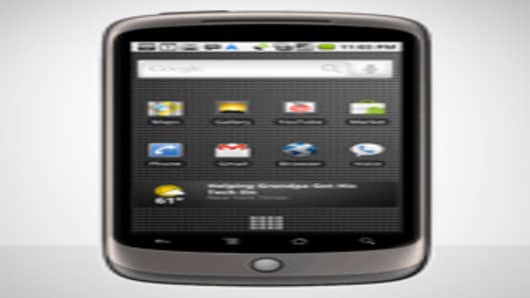After the first wave of early smartphone adopters rushed in, the growth of smartphone use continues to expand as older Americans are now starting to trade up to more techy, fun phones.
A fresh read on the market from NPD Group shows that smartphones made up 31 percent of the mobile device market in the fourth quarter, up from 23 percent in the last quarter of 2008. And most of the growth in smartphone penetration can be attributed to an older consumer, said Ross Rubin, executive director of industry analysis for consumer technology at NPD.
But as the older consumer crept into the market place, so did competition among smartphone mobile manufacturers. Although manufacturers are still feeling the boom of their growing market share, these companies are now facing the reality that revenue growth cannot last forever.
“Yes, revenue growth will continue to drop," Rubin said, but not just yet. And smartphones will continue to eat up mobile market share, just not at the rate seen in the past.
"There's still quite healthy growth (in the smartphone market share). If current trends continue, it will have at least another two years of growth," Rubin said.
Revenue growth dropped to 21 percent during the fourth-quarter, down from 37 percent a year earlier, according the report.
The market share gains — and widening demographics — should further prove to marketers and companies that smartphones are where consumers are heading and that they need to consider them in their marketing strategies.
This will only become more true as prices continue to fall, allowing more consumers to be able to afford these devices.
Growth in the fourth-quarter was spurred by price cuts and special promotions, Rubin said. In fact, about 75 percent of the smartphones purchased in the fourth-quarter were priced at $150 or less, according to the report.
Special promotions among carriers like Verizon — which offers specials like buy one 3G smartphone, get another one free — also gave consumers a stronger incentive to purchase because of a greater sense of value, Rubin said.
Some of the phones that were most heavily purchased include the usual suspects such as Apple's iPhone and Research in Motion'sBlackberry.
Rubin said around the middle of the year smartphone market share jumped to about 28 percent, mostly driven by the iPhone 3G's price reduction. But, the growth in the fourth quarter was heavily impacted by the sale of Motorola's Droid.
"You know over the past year, through 2009, we saw Apple and RIM as very strong in the smartphone market. In the fourth quarter though, the Android handsets did very well," said Rubin.
RIM, however, still sold more smartphones than any other maker during the fourth quarter, Rubin said.
More from Consumer Nation:
- Mobile Online Shopping to Double in 2010
- Target Takes Coupons Mobile With 2D Technology
- Consumers Not As Price Driven, But Still Looking For Deals
Questions? Comments? Email us at consumernation@cnbc.com



